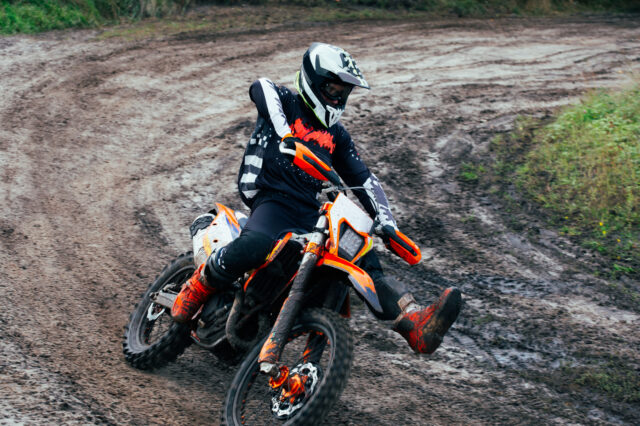UF Health study details a decade of motocross injuries at international event in North Florida

Every year, hordes of riders from around the world descend on a winding dirt track near Newberry for one of the biggest events of the motocross season. Adults, children and adolescents race for points and fame. While some children end up on the winners’ stand, others land in the hospital.
Now, a group of UF Health researchers has documented a decade of traumatic injuries from the annual international motocross championship. Their goal: To better understand how child health is affected by participation in competitive motocross racing. The findings were presented recently at the Pediatric Academic Societies 2023 conference.
The study offers a bigger-picture perspective for parents and pediatricians, said Erin B. Bruney, M.D., a senior pediatric resident and co-author of the study. Repetitive head trauma or repeatedly breaking the same bone or bones carries a risk of lifelong health complications. Likewise, the findings could help pediatricians advocate for optimal safety practices in motocross.
In motocross, motorcycle riders race on a course with varying terrain that can include obstacles such as mud or water, steep drop-offs and hairpin turns. In late November, riders gird themselves for the Thor Winter Olympics, also known as the mini-Os, at Gatorback Cycle Park. Emergency room workers at UF Health Shands Children’s Hospital make preparations of their own. Without fail, there’s a flood of patients with injuries including broken bones, separated shoulders and upper-body trauma.
“Every year, there’s a massive influx of patients with those kinds of injuries who come in, all within the same week. We know what’s coming so the whole pediatric hospital braces itself. You know you’re going to have really busy shifts that week,” Bruney said.
Bruney has seen her share of fallout from the motocross event: fractured wrists, broken and shoulders, hand trauma and the procedural sedation that’s needed when orthopaedic physicians set broken bones.
Between 2011 and 2021, 246 children — one-fifth of whom were under 12 years old — were treated for injuries suffered at the mini-Os, the researchers found. Almost all of the children underwent X-ray or CT imaging. Nearly 20% of them needed a broken bone set without requiring surgery. About 10% of patients needed surgery to treat their broken bones. Thirty percent required hospital admission, including seven children who were admitted to the intensive care unit.
The less fortunate patients arrive with multiple injuries. Thirty-five percent of them arrived with “multi-system involvement” — typically a broken bone with additional trauma to the head, abdomen or skin, Bruney said.
During the 10-year study period, one adolescent rider from out of state died due to an injury sustained at the mini-Os.
Although the study didn’t fully document riders’ use of safety equipment, Bruney said it was apparent from paramedics’ notes and medical records that most patients were wearing a helmet and full protective gear when they got injured.
While the weeklong event has averaged about 25 emergency room patients a year, Bruney said that figure didn’t count injured riders who went to non-UF Health emergency rooms in the area. One particularly unfortunate rider ended up as a patient twice in the same week, she noted.
“From any perspective — the number of X-rays that are being done, the amount of emergency medical service use and the trauma alerts that are coming through — the use of resources is considerable,” Bruney said.
In addition to a lot of morbidity for patients, she noted there’s also a huge stress on the hospital system.
“I don’t think we’ll be ending motocross competitions. There’s a lot of culture and a lot of history there. Kids are very passionate about it but I definitely think there is room for improvement in safety standards — and that’s something that needs to be looked at,” she said.
About the author
